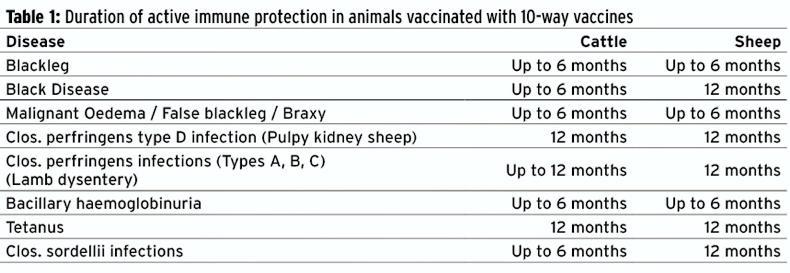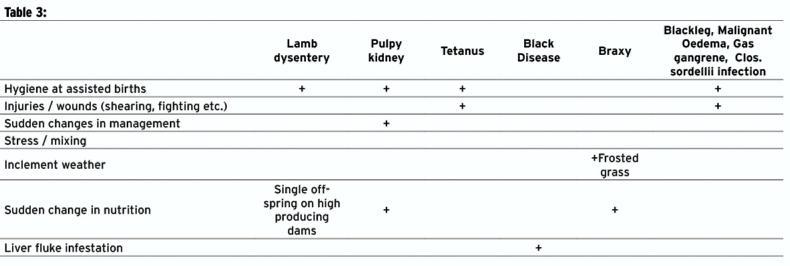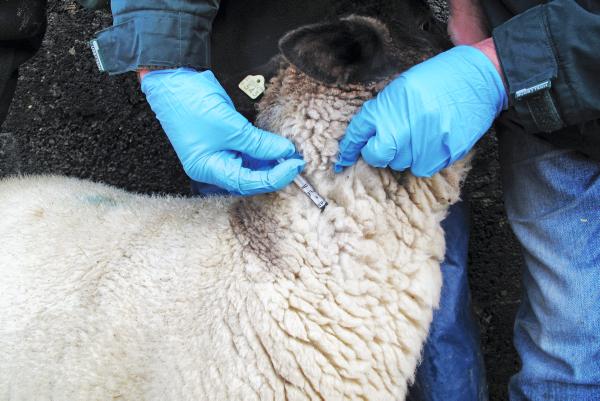I have often been challenged by farmers who wonder is there any real need for a clostridial vaccination. How long does protection last for in the vaccinated dam? How long does protection last in the offspring? How is it that farmer X said he never vaccinates and yet never encounters any losses? How fast do these vaccines work?
In this article we will specifically look at these issues with a view to determining whether you should consider clostridial vaccination as part of your annual healthcare programme.
Question: Is vaccination against clostridial disease of any value?
Clostridial disease vaccination is of enormous value in certain circumstances. But, based on previous disease history, it is difficult to justify on some farms. This is all dependent on the risk factors. A decision on whether to vaccinate against clostridial disease is dependent on farm-specific factors, there is definitely no ‘one-cap-fits-all’ answer.
Question: How long does protection last for in the vaccinated adult animal/dam?
The answer to this question has varied through the years, and, indeed, between products. Historically, it was believed that active immune protection lasted to clostridial vaccination for at least one year. This is still the case for Covexin 8 and for the clostridial components of Heptavac P Plus.
However, the duration of active protection has been examined in further detail in recently licensed vaccines – Covexin 10, Tribovax 10 (Bravoxin 10 in Northern Ireland) – and immunity conferred is now suspected to last in excess of one year for certain clostridial species and less than one year with other vaccines, particularly if the challenge level is high.
Therefore, manufacturers’ data sheets have protection levels listed on today’s product inserts that seem to reflect a minimum duration of protection (most commonly based on current requirements for antibody levels that are deemed to protect the animal from a heavy dose of the disease agent concerned) rather than just anecdotal evidence.
In many instances, therefore, annual vaccination will eliminate all covered diseases for a one year period. However, your local veterinary practitioner is best placed to advise you with regard to the risks on your farm and the likelihood/level of challenge.

Levels of protection conferred by these 10-way vaccines are listed in Table 1. Protection levels should be concluded as minimum which, with further research, may be elongated.
A similar approach has been taken in human medicine where tetanus vaccination used to be conducted annually, but, nowadays, vaccination against tetanus is only recommended every 10 years. However, lengthening inter-dose intervals to this degree cannot be concluded to confer adequate protection in animals where risk levels may be much higher than in humans.
Question: How long does protection last in offspring?
Just as with active immune protection, it was scientifically believed that, in the past, passive protection (from antibodies in colostrum from the vaccinated dam), due to transfer of immunity to the offspring of vaccinated dams, lasted against clostridia for up to 12 weeks.
Passive protection is hugely influenced by colostrum management. If offspring are given adequate colostrum (10% of bodyweight) from vaccinated dams, inside the first 12 hours of life, passive protection is likely to be successful.
Covexin 8 passive protection has been demonstrated to vary from two to 12 weeks, with passive protection from the clostridial components of Heptavac P Plus lasting up to three weeks. No passive immunity could be demonstrated for Covexin 8 to Bacillary haemoglobinuria in sheep and was shown to last for up to two weeks in calves.
Passive immune protection from antibodies in colostrum has been specifically investigated, in depth, for each component for the 10-way vaccines listed in Table 1. The duration of protection against each component varies and is shown in Table 2.

Question: What are the risk factors associated with the various clostridial diseases?
A number of risk factors which contribute to disease have been identified (see Table 1). Furthermore, there are recognised age differences between certain clostridial diseases which may be due to immune issues or due to the above risk factors varying in different groups and species. Many of the clostridial diseases are restricted to animals under two years old. Nutrition plays a key role in clostridial disease.
Over-feeding by young growing animals, abrupt changes in feeding habits, e.g. a switch from bare pasture to lush, for older animals can all lead to a proliferation of clostridia in the bowel, leading to toxin production and clinical signs.
Sudden introduction of concentrate feed can result in the same outcome. Clostridia are soil borne organisms and another common route of entry is via soil-contamination of wounds. Wound contamination can result from docking, castration (elastrator), shearing injuries, assisted birth or even navel entry.
The recent elevation in liver fluke infestation can trigger Black Disease, while there is a recognition that bacillary haemoglobinuria and possibly Clostridium sordellii infection are more prevalent in certain geographic regions.
Inclement weather can result in an elevation in deaths due to braxy (frosted grass).

Question: How fast do these vaccines provide immunity?
Clostridial vaccines generally provide immunity from about two weeks after completion of a primary course of two doses, spaced approximately four weeks apart (this varies slightly dependent on the product concerned).
Question: What can I treat animals with during an outbreak?
While penicillin and antiserum (tetanus only) are therapeutic options for clostridial disease, treatment is most often unsuccessful.
Clostridial vaccines have been shown to be useful in the face of an outbreak. However, immunity is not solid until approximately two weeks after the second dose of a primary course of two doses, spaced about four weeks apart. For details of specific vaccines, consult the manufacturers recommendations.
Question: What age should I start vaccination?
Vaccination against disease should start in young animals. Offspring from non-vaccinated ewes can generally be vaccinated any time from three weeks old onwards.
It may be acceptable to delay primary vaccination in offspring from vaccinated ewes until two to three months old, as protection from colostrum lasts up to 12 weeks. However, this does depends on the disease risk profile of the farm. If animals are not vaccinated in young life, they should ideally have their primary course completed at least two weeks in advance of breeding (sheep) or turnout (cattle).
Question: Should I use combined pasteurella + clostridial vaccine or should I stick to just clostridial vaccines for my sheep?
Where Pasteurellosis is a problem, a combined Clostridial/Pasteurella vaccine should be used. Pasteurella organisms are present in every flock, but whether they cause disease or not is largely determined by management, etc.
A primary course of two doses, four to six weeks apart, is also required for Pasteurella protection. Maternally derived protection in young lambs against Pasteurellosis lasts approximately four weeks. Finally, various forms of pasteurellosis exist in sheep.
The existing Pasteurella vaccines provided good protection against pasteurellosis caused by Mannheimia haemolytica and B. trehalosi. Certain other species of Pasteurellae are not covered and, unfortunately, there are no vaccines for these species. But, happily, the latter species of Pasteurellae are relatively uncommon.
The choice of vaccine depends on the likely destination of the lambs. Covexin 8, Covexin 10, Tribovax 10 (Bravoxin 10 in NI) and Heptavac P Plus are really aimed at sheep which are destined to become breeding animals, while Ovivac P is a vaccine aimed at fattening lambs.
This is because the latter combination vaccine is relatively cheaper due to the fact that it only contains components against pulpy kidney, tetanus, braxy, blackleg and pasteurella pneumonia. In replacement ewes, a single annual booster is recommended at least four weeks before lambing is due.
Question: Should I vaccinate or should I abstain?
If deciding to cut costs on healthcare, it is important to ensure that you don’t cut productive costs.
Clostridial diseases are still quite prevalent throughout the country, despite the availability of useful vaccines.
The recent decline in the focus on vaccines is likely to reflect the economics of farming in years gone by, but in the new economic climate, farmers ignore these preventative programmes at their peril.
At the very least, discuss your risk profile and the pros/cons of vaccination with your local veterinary practitioner.






 This is a subscriber-only article
This is a subscriber-only article













SHARING OPTIONS: